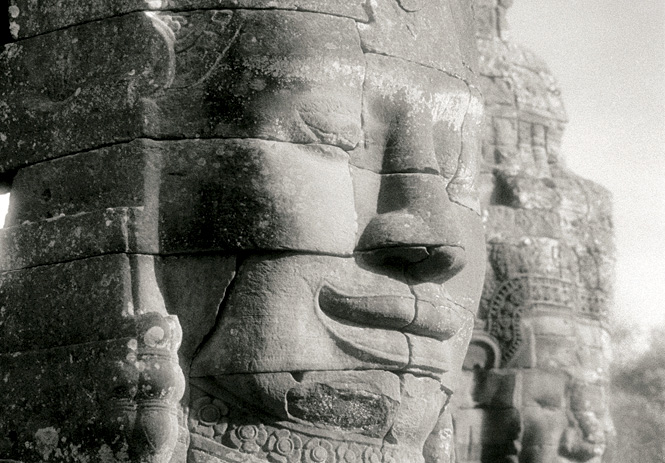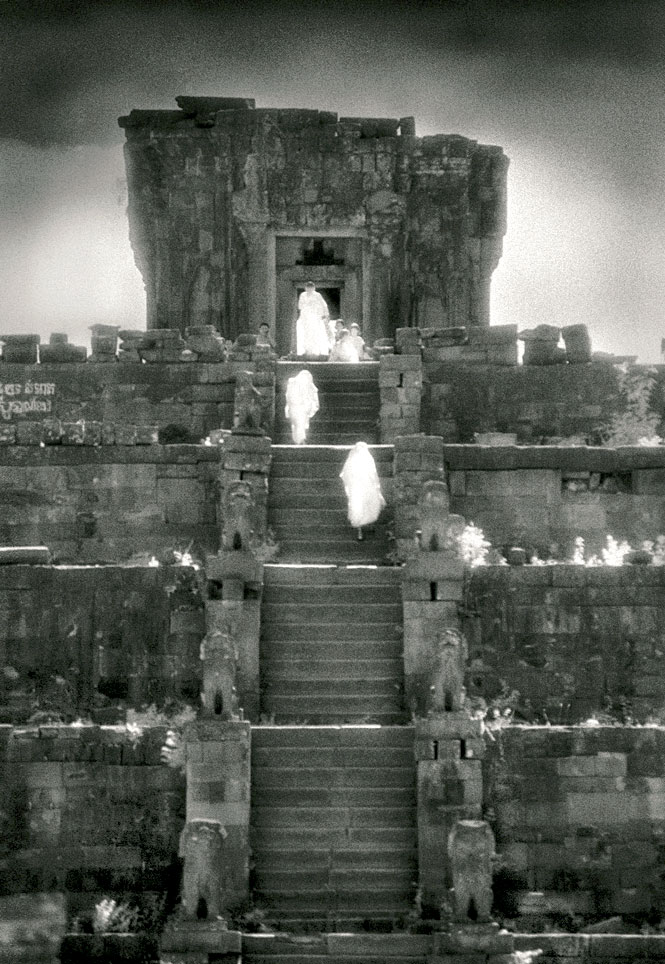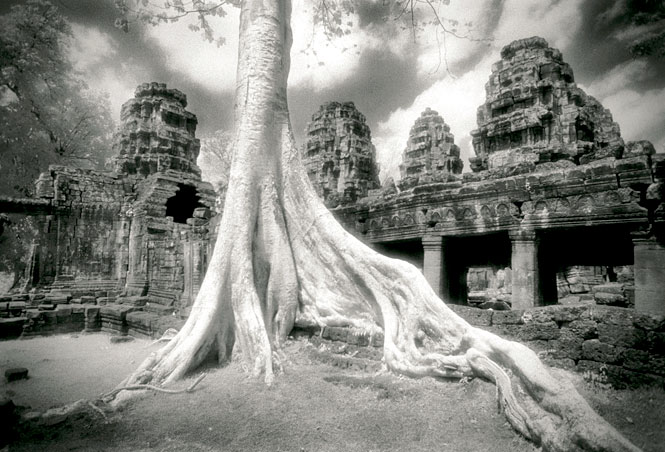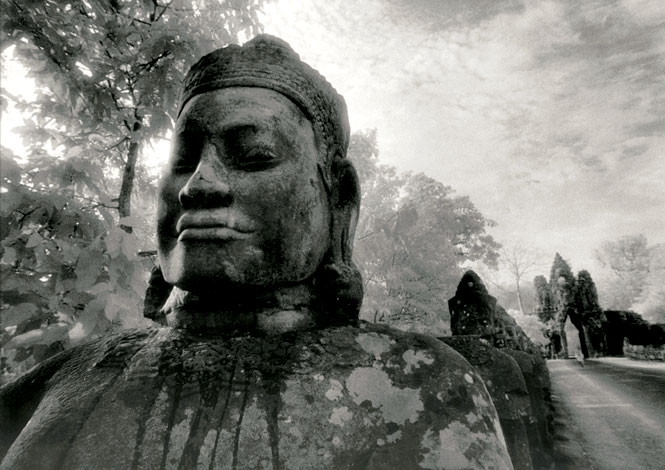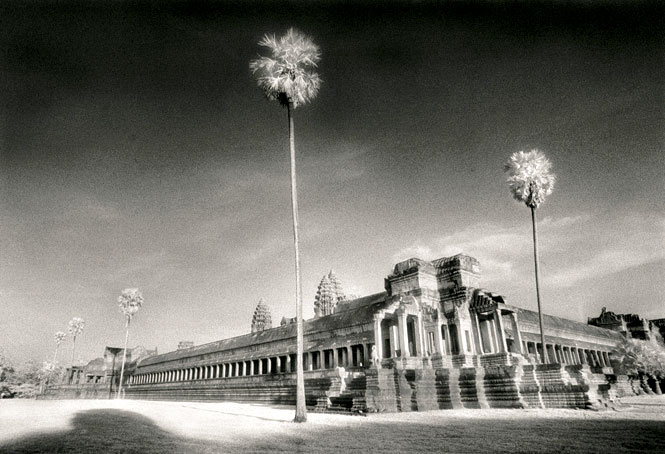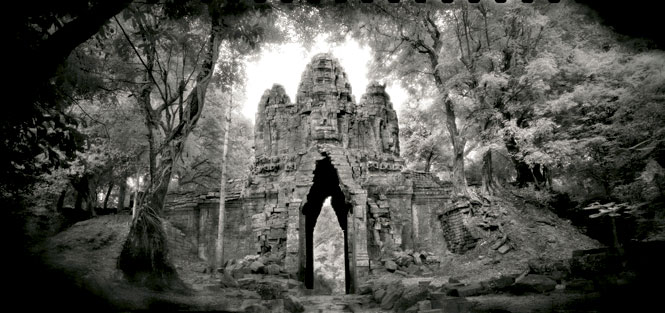Above: The smiling faces of bodhisattvas at the Bayon.
A new book captures the ancient beauty of Cambodia’s Angkor temple complex
Photographs By John Mcdermott
When American photographer John McDermott First visited Cambodia in 1995, tourists were few and far between. Luxury hotels had yet to descend on Siem Reap, the northern town that serves as the gateway to Angkor. Touts were unheard of.
For McDermott, who had come here to document the great temple complex of the ancient Khmer empire, the conditions were perfect. “The first time I saw Angkor and the massive tree roots twisting through its ruins, I was struck by a powerful sense of the passage of time,” McDermott recalls. “I wanted to capture this sense of Angkor as it had existed for centuries—timeless, slumbering, and yet still part of the life of the people who live in its shadow.”
In the years since, McDermott, who decided to settle in Siem Reap in 2003, has compiled a comprehensive visual portfolio of the World Heritage Site. “Angkor’s transition to an international tourist destination has been so rapid that many of my photographs are now historically relevant: they can no longer be taken today due to the cutting of trees, the crowds, and the ongoing restoration work,” he says. The 100 or so black-and-white images compiled in McDermott’s latest book, Elegy: Reflections on Angkor, thus provide an enduring portrait of the erstwhile Khmer capital, made all the more unique in that they were captured on infrared film, bathing the crumbling towers and root-strangled walls of Angkor in an ethereal, otherworldly light. “This book,” the photographer says, “is my fond tribute to Angkor, as it undergoes the transition to its new incarnation.” (For more information or to purchase the book, visit asiaphotos.net or mcdermottgallery.com.)
Originally appeared in the April 2009 print issue of DestinAsian magazine (“Temple Treasures”)

